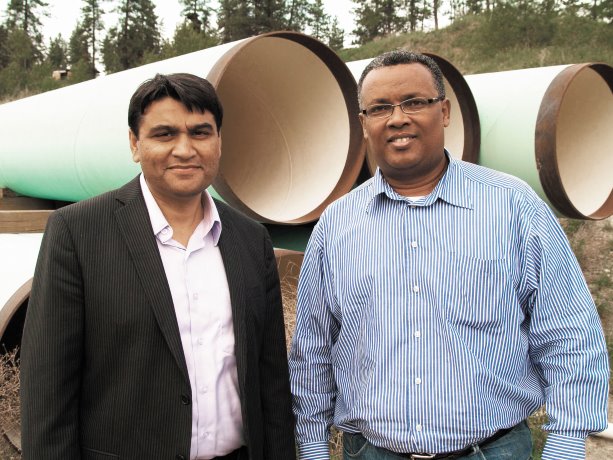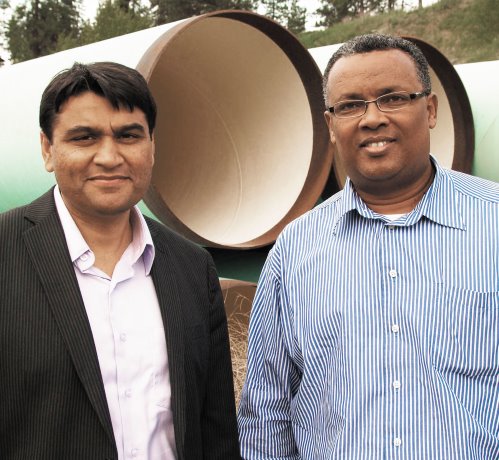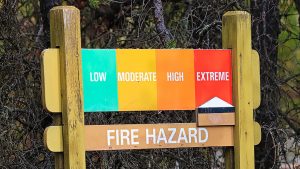Two researchers at the University of British Columbia (UBC) have developed a tool that will help the province’s utilities in small and medium-sized communities prioritize water system construction and rehabilitation projects.
By targeting water pipes most likely to fail, utilities will see the greatest improvement to the overall quality of drinking water.
The tool was developed by Solomon Tesfamariam and Rehan Sadiq, civil engineering professors at UBC’s Okanagan campus.
"My experience is in environmental and water engineering," says Sadiq.
"Solomon’s expertise is in structural engineering, so together we came up with an approach that looks at the way in which structural issues and physical deterioration of the pipes affect the quality of drinking water. Our Decision Support Tool is a low-tech, software-based solution that recognizes that if water quality is good at the point of entry, then only the condition of the pipes can affect that quality by the time it’s delivered."
The 2016 Canadian Infrastructure Report Card — developed by the Canadian Construction Association, Canadian Public Works Association, the Canadian Society for Civil Engineering, and the Federation of Canadian Municipalities — estimates that 29 per cent of Canadian drinking water infrastructure, worth an estimated $65 billion, is rated either fair, poor, or very poor.
Much of it is approaching or at the end of its useable life. The report also notes that many municipalities don’t have sufficient data to assess the condition of their water infrastructure.
"Larger municipalities have the financial resources to objectively assess the condition of water infrastructure," says Sadiq. "Many of the small and medium municipalities, with 5,000 to 50,000 customers, don’t have the in-house expertise to perform those assessments. Some utilities are limited to one person responsible for the entire system. They also don’t have the financial resources for regular operations and maintenance and rely heavily on outside consultants for assistance."
Tesfamariam notes that the infrastructure of many of the smaller utilities is often spread out over a wide physical area and subject to the extremes of cold and heat typical of much of the BC climate.
"We’re using historic data on soil conditions, pipe material, structural integrity, hydraulics and the experience of utility personnel to help the model to predict future infrastructure performance," he says.
The software assists users in understanding what data is important to collect, allowing them to do some simple condition evaluation that doesn’t require extensive expertise, for example looking at overall water loss or leaks reported in particular sections of the infrastructure.
It then provides the user with lifecycle costs of the infrastructure over the short and long term based on either doing nothing or undertaking a series of corrective actions.
"The goal is to make the greatest improvement to the average health of the overall water system," says Sadiq. "The report will also provide them with an important tool to go before their local governments to make an evidence-based argument on why they should be given the funding to make those improvements."
While the software is designed to be simple to operate, it requires some customization for each community assessed to provide the highest quality results. UBC is devoting the efforts of four PhD students to help optimize the software for B.C. communities currently using the tool.
"Our next step will be to expand the tool to include source water and water treatment," says Sadiq. "We could then go on to fully integrated management of all buried water-related infrastructure including other asset classes such as the wastewater and stormwater systems."
With enough community participants in the province, the researchers hope to forge a consortium of small cities and towns who will create a performance assessment system similar to the National Water and Wastewater Benchmarking initiative.
"By providing local benchmarks, smaller municipalities will be able to measure their water systems against the average performance of cities and towns in their area," says Sadiq.
"That will encourage utilities to improve their game instead of meeting bare minimum standards."

UBC researchers Rehan Sadiq, left, and Solomon Tesfamariam are developing a tool to help smaller utilities improve their drinking water systems.
Photo: UBC"










Recent Comments
comments for this post are closed